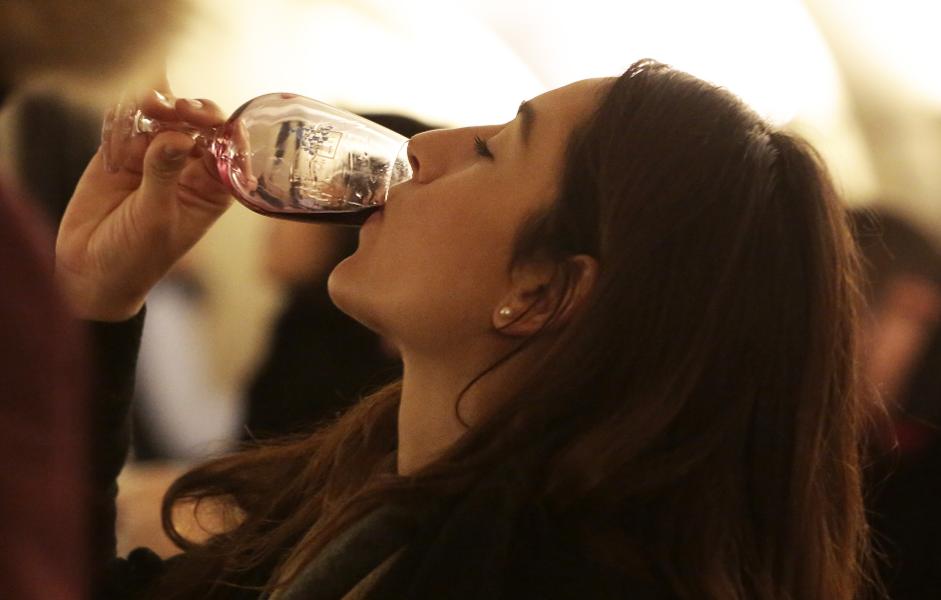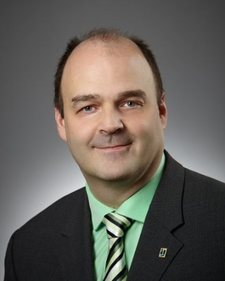
Tom Mullen
March 23, 2020
Wander around on foot within the walled city of Beaune in Burgundy, France, and you will notice a steep roof with multicolored tiles on an elegant, obviously ancient structure. This Hospices de Beaune building is a stunning example of 15 th century architecture. Once a hospital for those without funds, today its hosts an annual wine auction that forms part of a three-day festival—including an opulent formal dinner at Clos de Vougeot, further north.
In the year 1443, during a period of famine, the chancellor to the Duke of Burgundy and his wife established this hospital. Within four years, wines made from vineyards donated to the hospital were sold, and proceeds paid for charitable activities associated with the Hospices. The year 1859 brought a change to the procedure: rather than selling wine, the hospices held an auction. This first ever charitable wine auction still takes place each November, and since 2005 has been hosted by Christie’s Auctions. This year’s November gathering will mark the event’s 160 th anniversary.

Wine auctions take place throughout the world today—including the Grosser Ring in the Mosel Valley of Germany, the Cape Winemakers’ Guild of South Africa and the Naples Winter Wine Festival auction in Florida. Each event brings in from thousands to tens of millions of dollars. Some wine auctions are for charity, others not.
In 1969 Michael Broadbent of Christie’s in the U.K. was contacted by Heublein, Inc.—a U.S. producer and distributor of alcoholic beverages—and asked to host a wine auction at the Continental Plaza Hotel in Chicago. The event sold both European and Californian wines for over $55,000.
Conducting a similar and subsequent auction in New York turned out to be far more challenging, according to Ursula Hermacinski in her book The Wine Lover’s Guide to Auctions . By 1980, Christie’s was granted a permit for the auction. Yet weeks before the scheduled event, a group of local retailers filed a restraining order against the State Liquor Authority—saying it lacked legal ability to issue an auction license. The result: the event was cancelled.
Meanwhile, wine that Broadbent had collected was moved to another storage facility in New Jersey. He and co-workers did not realize that this location was not permitted to store alcohol. Soon, six police cars surrounded the premises. They were on the verge of breaking each bottle—according to law—before a police officer of French Alsatian descent, and with an apparent affinity for quality wine, became convinced otherwise. Instead of broken bottles, fingerprinting and a fine ensued.
In 1981, the first ever Auction Napa Valley was held in California in the U.S. This, like the French Hospices de Beaune wine auction, was and remains a charitable event.
To learn about its history, I met with Robin Daniel Lail in the town of Yountville within California’s Napa Valley. Lail’s Finnish born great-granduncle made a fortune selling Alaskan furs in San Francisco, then later founded Inglenook winery in 1879. Her father, John Daniel, Jr., reopened this winery in 1933 after Prohibition was repealed. In 1977 Robin became personal assistant to renowned winemaker Robert Mondavi—who had worked with her father. She later co-founded Dominus Estate and Merryvale Vineyards. After later selling partnerships in both, in 1995 she launched Lail Vineyards—whose wines have received two 100-point scores from Robert Parker’s The Wine Advocate.
Robin Lail is a relaxed and humorous woman, generous with time and stories, articulate and insightful. She is also a repository of Napa Valley lore gained from spending her life in the valley, as well as from her family’s 140-year history in the region.
Before I sampled Lail wines, Robin shared a history of the wine auction.
“This is the model for all wine auctions in the United States. Auction Napa Valley started in 1981. The idea came from a lunch. I was working as Robert Mondavi’s assistant. Mondavi had been appointed—perhaps captured?—by the St. Helena hospital to be the chairman of a seven-million-dollar capital campaign. There were not a lot of vintners at that time. At the time of the first auction in 1981, there were just 36 Napa Valley vintners. Today we have 1,050 plus.” [The non-profit trade association Napa Valley Vintners has 550 members.]
“Robert Mondavi was my dad’s protégé in the wine business—John Daniel Jr. They were very close. My dad had died in 1970. So we’re having this lunch and had invited a woman named Pat Montandon, because in the case in capital campaigns, you always make a roster of your primary potential donors. The big givers. And so she was one of those.”
[Montandon—born in 1928—had at one time dated Frank Sinatra, hosted a San Francisco TV show, authored a bestselling book titled How to be a Party Girl, and founded Children as Teachers for Peace—which allowed her to meet with such leaders as Premier Zhao Ziyang of China, Indira Gandhi, Mother Teresa and Mikhail Gorbachev.]
Montandon and her husband Al Wilsey had—the year before—held a party at their home at the Rutherford Cross Road. Those who did not receive invitations subsequently shared their irritation. Possibly in an effort to make amends, Montandon wanted to hold another event. She discussed this at the lunch with Mondavi and Lail.
“She wanted to do another party. So she arrived at the lunch with an agenda. We’re talking, just chatting along, and finally she comes up with what she wants to do. She said, ‘You know what I’d like to do, is I’d like to have an auction for the Napa Valley Vintners in our home, and I think it would be an amazing way to raise some money for the vintners.’
“Bob Mondavi turned to me and he said, ‘This is what your father and I have been looking for all these years!’—which was a primary way to promote the Napa Valley appellation. And Margaret [Robert Mondavi’s Swiss born wife] said, ‘Well it could be like the Hospices de Beaune.’
“That was the foundation. It worked out that it wasn’t appropriate to do it at a private home. But that’s how it started. It took us two years to put things together. Bob sent me to the first vintners’ meeting to present the idea. The vintners were very leery. They were concerned that we might make fools of ourselves in trying to do this. As we moved along, Louis Martini was appointed by the vintners as chairman of the auction. And we wanted to invite people from all over the country and beyond, if possible. It basically was the wives of the vintners who stepped up to the plate and made it happen.
“We all had concerns. But it was such a possibility to do three things. One, to promote the Napa Valley appellation; two—very importantly—to raise money for local charities, and three—to involve the community at large in something that was connected with the vintners—to begin to erode that ‘we/they’ situation.”
Since the auction began 39 years ago, it has remained consistently successful.
“This auction has raised over $200 million for local charities. It’s a very important community force. The generosity of these vintners is extraordinary. It’s been very important in building the appellation—which is world renowned—and very important in setting the tone and pace and focus on excellence that we have here in Napa Valley.
“We realized very clearly that the concept of the wine auction may have reached its nadir and gone over the other side of the bell curve. This is universal, and yet it remains the most effective way to raise a great deal of money. It’s important in the wine business to stay fresh, so it’s important for us to stay fresh in the auction.
“The auction itself is always held at Meadowood. And the day before—Friday—there is a barrel lot auction, and many vintners also come and pour wines at this event, and restaurants from all over the community come and do bites. It’s a very fun event that moves around from winery to winery. It’s limited because there are a thousand people that come.”
The auction helped increase the visibility of the Napa Valley for quality wine production. I asked Robin about the subsequent growth of visitors to the region.
“My dad, in the 1940’s, used to complain bitterly about the 40,000 people that would come to Napa Valley during the year. Today it has a range from between 3.5 million and 5 million. So that is a huge change, and an issue for us. We are constantly turning the kaleidoscope to try and figure out a way to try and mitigate that impact.
“There were nine wineries when I was growing up in the 40’s. And these were people who—of the 120 to 200 wineries that were making wine before the turn of the century—these were people who reopened after Prohibition. And building this business back was very difficult.
“At the time of 1981 when we had our first auction, there were 36 vintners. And then, suddenly, it blossomed and became a place where many, many people wanted to come and be a vintner. When you have a big influx of people you may be tinkering around the edges of comprehension of what it took to build the brand of this appellation—and the importance of the sense of community. There’s a very unique set of vintners here. I’ve had the opportunity to travel and meet a lot of wonderful people, but the camaraderie and mutual support of this vintner organization is extraordinary.
“My father made legendary wines—still showing beautifully today. I had a bottle of 1959 Cabernet Sauvignon a couple of weeks ago that was singing. Beautiful.”
We stopped chatting awhile, during which I sampled two wines. These were the Lail Vineyards 2017 Georgia Sauvignon Blanc, and their 2016 J. Daniel Cuvée Cabernet Sauvignon. The first includes crackling, beautifully balanced acidity, and the second is a tightly focused ray of deep fruit and a hit of pepper. Both hail legacy and quality: spectacular wines. Tasting these evinces the hereditary nature of John Daniel Junior’s winemaking prowess.
But tasting the wines also emphasized another simple truth. A requisite hallmark of the world’s best charity wine auctions is that they include some of the finest wines on this planet.
This article was written by Tom Mullen from Forbes and was legally licensed by AdvisorStream through the NewsCred publisher network.
© 2024 Forbes Media LLC. All Rights Reserved
This Forbes article was legally licensed through AdvisorStream.
